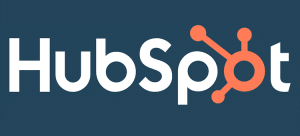With judicious planning, IT support can morph from a financial black hole into a beacon of savings. Consider cloud server support or outsourcing help desk services as examples – these are not only cost-effective solutions but also significant shifts in operational thinking that enable you to take your company to the next level.
So, how does one navigate the landscape of IT support strategies to clinch those savings?
Let’s explore sixteen practical tactics that keep your company’s wallet firmly in the black.
1. Optimize Through Outsourcing
Just like you would use the strategy of comparing, say, a CIT Bank savings account review with a review of an American Express High Yield savings account to find the most financially sound option for your needs, you can save on significant costs by outsourcing after-hours IT support – and comparing different services to find the best and most cost-effective solution.
Yes, embracing outsourcing is a calculated move. When it comes to IT support, the benefits are clear. It can lead to:
- Reduced Labor Costs – Hiring full-time staff is expensive. Outsourcing allows access to global talent at a fraction of the cost.
- Scalability – You can easily adjust the level of support to current business needs without the HR headaches.
- A Greater Focus on Core Business Activities – You’ll be able to redirect internal resources toward growth-focused activities rather than day-to-day IT issues.
By selecting strategic functions for outsourcing, you can attain more than just cost savings – you can achieve enhanced flexibility and sharpened focus on core competencies.
2. Utilize Cloud Services
Migrating to cloud services translates into direct cost-efficiency for companies. Take a glance at these compelling advantages:
- Pay-as-you-go Pricing – Unlike many traditional models, cloud services offer flexible payment plans that align with usage.
- Minimal Infrastructure Investment – By shifting to cloud services, heavy expenses linked to buying and maintaining physical servers can be significantly reduced.
- Automatic Updates – Cloud providers handle updates, reducing the need for dedicated internal IT staff.
A prime example of this strategy in action is Netflix’s transition to Amazon Web Services (AWS), which not only cut costs significantly but also bolstered their service reliability and scalability.
By capitalizing on the economies of scale inherent in cloud services, businesses can unlock financial agility and invest where it counts – in innovation and customer experience.
3. Harness Preventive Maintenance
Proactive IT support can save companies a fortune in the long run.
Here’s why preventive maintenance is not just a good-to-have, but a must-have:
- Longevity of Assets – Regularly updated and maintained systems experience fewer breakdowns, extending their useful life.
- Reduced Downtime – Preventative strategies mean detecting issues before they escalate to costly interruptions.
- Enhanced Security – Routine checks ensure that security measures are always up-to-date, averting potential breaches.
Without a doubt, integrating preventive maintenance into your IT support suite fortifies your tech frontiers – it’s like building a dam before the floodwaters rise, not after.
4. Empower Through Employee Training
Investing in employee IT training generates cost-saving ripple effects throughout an organization. Consider these impactful benefits:
- Reduced Dependency on Support – Trained employees can troubleshoot basic issues independently, lessening the load on IT support.
- Boosted Productivity – Efficient use of technology accelerates workflow and reduces time wastage.
- Strengthened Security Culture – A well-informed staff is your frontline defense against cybersecurity threats.
By cultivating a culture of self-reliance and continuous learning, companies can watch their IT support costs dwindle while performance metrics soar.
5. Implement Centralized Management Software
Centralized management software acts as the command center for IT support, offering a host of cost-saving advantages:
- Streamlined Processes – Automating routine tasks reduces manual errors and frees up valuable time.
- Enhanced Visibility – A single dashboard provides real-time insights into all IT operations, pinpointing inefficiencies.
- Simplified Compliance – Staying on top of regulatory requirements is easier with centralized control.
By unifying your IT landscape under one robust system, you’ll witness not just savings in costs but an elevation in productivity and compliance – it’s like tuning an orchestra to play in perfect harmony.
6. Leverage Remote Support Capabilities
Remote IT support has become a cornerstone for cost-efficient tech assistance. The following points underscore its financial prudence:
- Decreased On-site Costs – Eliminating the need for travel significantly cuts expenses.
- Expanded Talent Pool – Access specialists globally, not just within commuting distance.
- Around-the-Clock Availability – With differing time zones, support can be available 24/7 without extra costs.
By harnessing remote support capabilities, organizations can not only achieve a leaner cost structure but also benefit from an agile and responsive support system that never sleeps – akin to having an eternal guardian for your IT infrastructure.
7. Streamline with Self-Service Portals
Self-service portals hand the reins over to the users, providing a seamless way to tackle basic IT issues without direct support:
- Lowered Support Tickets – Empowering users to solve common problems reduces overall ticket volume.
- Increased Resolution Speed – Immediate access means quicker fixes and less downtime.
- 24/7 Assistance Availability – Users get help whenever needed, without waiting for office hours.
By offering a repository of FAQs, troubleshooting guides, and automated diagnostics tools, companies can create an environment where solutions are just a few clicks away. This autonomy not only streamlines IT support but also fosters a more competent user base – a win-win scenario akin to teaching someone to fish rather than handing them a fish each day.
8. Use Smart Asset Management
Efficient management of IT assets can lead to substantial cost reductions. Consider how smart asset management makes an impact:
- Optimized Usage – Ensuring IT assets are fully utilized means no wasteful overspending.
- Lifecycle Management – Keeping track of asset lifespan helps plan for upgrades and replacements, avoiding emergency expenditures.
- Inventory Accuracy – Knowing exactly what you have prevents unnecessary purchases and lost assets.
By adopting a system that keeps a precise ledger of your technological arsenal, businesses can eliminate the guesswork and financial leaks – treating IT assets not as mere tools but as valuable investments that need to be managed with the same rigor as any portfolio.
9. Adopt Energy-Efficient Technologies
The green revolution in IT isn’t just good for the planet – it’s good for the balance sheet as well. For instance, adopting green-efficient solutions for your IT support can lead to:
- Reduced Power Bills – Energy-efficient hardware and servers significantly lower electricity costs.
- Tax Incentives – Governments often provide financial benefits to companies that implement green technologies.
- Sustainable Reputation – Eco-friendly practices enhance brand image and can lead to increased customer loyalty. In turn, you can grow your business and generate more profits.
Google has been a leader in this space, investing heavily in energy-efficient data centers and renewable energy sources, showcasing how environmental responsibility can also drive economic gains.
By making eco-conscious choices in technology procurement and operation, businesses not only contribute to a sustainable future but also enjoy a lighter utility cost burden – a clear-cut case where doing right by the earth syncs with fiscal prudence.
10. Perform Regular Software Auditing
Routine audits of software and licenses can uncover hidden savings. Here are some key points:
- Eliminated Redundancies – Identifying and removing duplicate applications trims excess spending.
- License Compliance – Staying within license agreements avoids costly fines for non-compliance.
- Usage Analysis – Evaluating whether employees use the software helps decide if renewals are justified.
By treating these audits not as a formality but as an essential health check for IT expenditure, companies can ensure their software arsenal is both legally compliant and financially optimized – turning what could be seen as an administrative burden into a proactive cost-saving measure.
11. Harness Data Analytics for Enhanced Decision-Making
In an era where data reigns, leveraging analytics can serve as a compass to navigate the complexities of IT expenditures. You can transform raw data into cost-saving strategies by:
- Pinpointing Inefficiencies – Data analytics highlight underperforming areas ripe for optimization.
- Foreseeing Tech Trends – Stay ahead in the tech curve by identifying which tools and technologies yield the best ROI.
- Tailoring IT Investments – Custom-fit your technology landscape to match unique business needs, thus avoiding one-size-fits-all spending traps.
By entrusting data with the narrative of your company’s technological journey, you craft a storyline that cuts costs and carves out competitive advantages.
12. Opt for an Integrated Software Ecosystem
An integrated software ecosystem can be the linchpin of cost-efficiency in IT support. By choosing interoperability over isolated solutions, companies gain:
- Consolidated Toolsets – Fewer platforms mean less overlap, fewer subscriptions, and lower training costs.
- Data Consistency – Seamless information flow reduces errors and time spent reconciling discrepancies between systems.
- Enhanced Collaboration – Teams can work together effectively without the friction of switching contexts or tools.
Much as a pilot relies on a unified control panel to navigate the skies efficiently, businesses too can command their IT with a cockpit of well-integrated systems that make economic sense. This cohesion not only trims the fat from your budget but also strengthens operational agility — allowing swift maneuverability through the challenges of the digital marketplace.
13. Negotiate Comprehensive IT Vendor Contracts
Savvy companies know that the art of negotiation can turn vendor contracts into a crucible for savings. A comprehensive IT vendor contract, meticulously hammered out, provides:
- Bundled Services – Package deals offer more services at a better rate than piecemeal purchases.
- Long-term Price Locks – Secure current pricing against future rate increases to control budget forecasting.
- Customizable Support Levels – Tailor the support to meet demand without paying for unnecessary extras.
Like a chess grandmaster who anticipates every move, business leaders must strategize their vendor engagements with foresight and precision. This tactic not only curbs immediate expenditure but also constructs a bulwark against cost creep — ensuring your IT budget is as fortified as it is flexible.
14. Embrace Automation in IT Tasks
In harnessing the potential of automation, businesses can sharpen their competitive edge while shaving off costs. Embracing automated processes within IT delivers tangible benefits, including:
- Decreased Manual Labor – Automate routine maintenance and watch manpower costs retreat.
- Consistent Quality Assurance – Errors dip as machines execute tasks with precision.
- Swift Resolution Times – Automated diagnostics and resolution shorten downtime.
As a seasoned fisherman casts a net to multiply his haul with less effort, so too does automation allow companies to cover more ground with greater efficiency. This strategy is not merely about embracing technology; it’s about redefining the economics of your IT operations — transforming repetitive tasks into cost-saving symphonies played by digital conductors.
15. Consolidate Communication Platforms
Streamlining communication through platform consolidation is a strategic maneuver for cost containment in IT. This unified approach yields several financial benefits:
- Reduced Licensing Fees – Paying for one platform instead of many cuts down on subscription costs.
- Lowered Training Requirements – A single system simplifies the learning curve, saving on training time and resources.
- Enhanced Productivity – Centralized communications minimize context-switching, optimizing workflow efficiency.
Much like a well-trained battalion moving in unison to overcome challenges with less resistance, a company employing a consolidated communication tool moves with greater cohesion and purpose. This consolidation doesn’t just ease the financial load; it aligns teams towards more effective collaboration, ensuring that company resources are directed not towards managing multiple tools but towards conquering business objectives.
16. Refine Incident Management Processes
Lastly, fine-tuning your incident management can be a masterstroke for fiscal efficiency. Streamlined processes in this area lead to:
- Quicker Response Times – Fast reactions to incidents reduce costly downtime.
- Lower Repeat Issues – Effective solutions minimize the recurrence of expensive problems.
- Better Resource Allocation – Focus on high-impact issues ensures optimal use of IT personnel.
Picture a well-oiled machine, each part functioning with intent and precision; that’s the ideal model for incident management. A refined approach not only mitigates monetary waste but also cultivates a robust IT environment. In doing so, businesses can favorably influence their bottom line – navigating away from the turbulent waters of unforeseen IT expenses towards smoother sailing ahead.
Summing Up
As we have seen, harnessing the right IT support strategies can lead to substantial cost savings:
- Outsourcing offers scalability and a focus on core business activities.
- Cloud services provide financial agility with pay-as-you-go models and minimal infrastructure costs.
- Preventive maintenance ensures asset longevity and security.
- Employee training diminishes dependency on support teams.
- Centralized management software streamlines operations.
- Remote support expands talent access while reducing expenses.
- Self-service portals empower users to address simple issues independently.
- Smart asset management avoids wasteful spending.
- Energy-efficient technologies reduce utility costs and enhance brand image.
- Regular software auditing keeps software spending in check by eliminating redundancies and ensuring license compliance.
- Data analytics for decision-making highlights areas for cost reduction and investment.
- An integrated software ecosystem consolidates toolsets, enhancing collaboration and data consistency.
- Comprehensive vendor contracts offer bundled services and price stability.
- Automation in IT tasks cuts labor costs while improving quality assurance and resolution times.
- Consolidation of communication platforms reduces licensing fees and training requirements, boosting productivity.
- Incident management process refinement leads to faster response times and better resource utilization.
Implementing these practical measures transforms IT support into a strategic ally of fiscal efficiency. So, examine your current IT structure and explore each of the above options in more detail to determine how to utilize practical IT support strategies to your company’s financial advantage.





